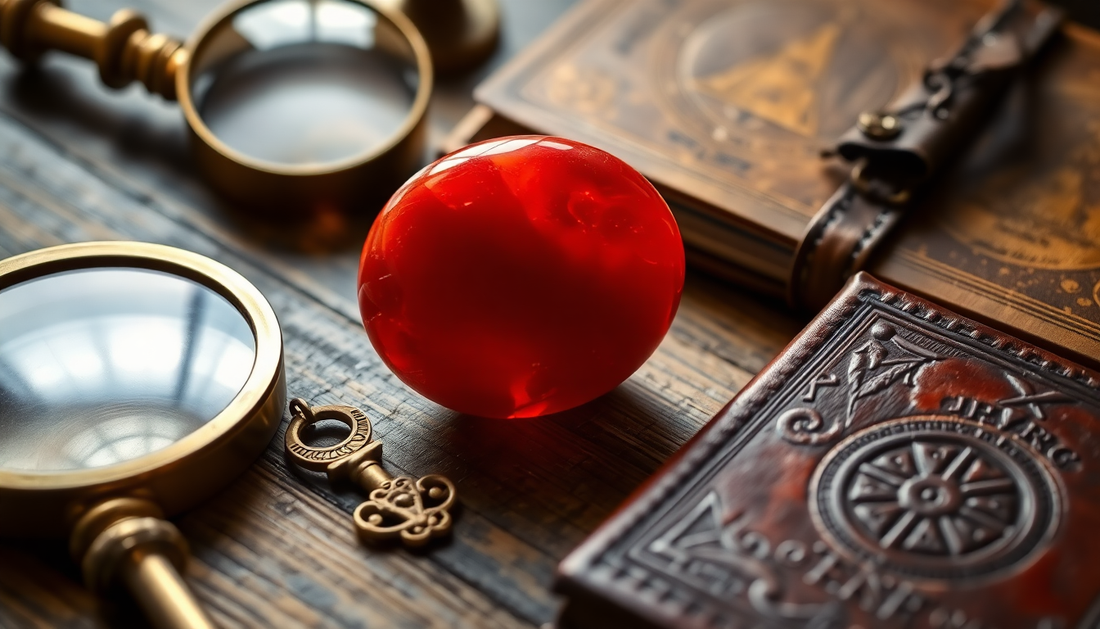
Unlocking the Secrets of Carnelian: A Renaissance Gem with Ancient Allure
Share
In the vibrant tapestry of the Renaissance, gemstones held a captivating allure, each one imbued with a unique history and symbolic meaning. Among these treasures, carnelian stood out as a gem that captured the imagination of artists, scholars, and the elite alike. Its fiery hues and ancient associations made it a prized possession, and the stories that surrounded this gemstone are as fascinating as the stone itself.
Carnelian, a variety of chalcedony, has been prized for its warm, reddish-orange hues since the dawn of civilization. The name itself is derived from the Latin word "carneus," meaning "flesh-colored," a nod to the gem's resemblance to human skin. In the Renaissance, this gemstone was believed to possess a range of mystical and medicinal properties, making it a highly sought-after treasure.
One of the most intriguing aspects of carnelian's history is its connection to the ancient world. The Egyptians, for instance, revered carnelian as a symbol of the sun and life, often using it in amulets and jewelry to ward off evil spirits and promote good health. The ancient Greeks and Romans also held carnelian in high regard, believing it to have the power to calm the mind, promote courage, and even enhance fertility.
As the Renaissance blossomed, these ancient beliefs and traditions surrounding carnelian were revived and reinterpreted. Artists and scholars of the time became fascinated by the gemstone's rich symbolism and incorporated it into their works. Michelangelo, the renowned Renaissance artist, is said to have carved a magnificent carnelian seal that depicted the Roman god Jupiter, showcasing the gem's enduring significance.
But the allure of carnelian extended beyond the realm of art and spirituality. In the courts of Europe, this gemstone was highly prized for its use in jewelry and accessories. Wealthy patrons commissioned exquisite pieces, from rings and necklaces to intricate cameos and intaglios, all adorned with the captivating hues of carnelian.
The Renaissance's fascination with carnelian also extended to the realm of medicine and alchemy. Believed to possess healing properties, carnelian was thought to be effective in treating a range of ailments, from digestive issues to heart palpitations. Alchemists, in their quest for the elixir of life, also incorporated carnelian into their experiments, believing it to hold the key to unlocking the secrets of the natural world.
Today, the legacy of carnelian's Renaissance-era allure lives on, with collectors and enthusiasts marveling at the gem's enduring beauty and the captivating stories that surround it. Whether you're drawn to its rich history, its symbolic significance, or its timeless aesthetic, carnelian remains a gem that continues to captivate and inspire, a testament to the enduring power of the natural world.
The Symbolic Significance of Carnelian
In the Renaissance, carnelian was believed to possess a range of symbolic meanings, each one rooted in the gem's ancient associations and natural properties. One of the most prominent beliefs was that carnelian held the power to promote courage, strength, and leadership. This made it a popular choice for signet rings and seals, as it was thought to lend an air of authority and confidence to its wearer.
Carnelian and the Sun
Another key aspect of carnelian's symbolism was its connection to the sun. The gem's fiery hues were seen as a reflection of the sun's radiant energy, and it was often used in amulets and talismans to harness the power of the celestial body. This association with the sun also led to beliefs that carnelian could promote vitality, fertility, and overall well-being.
Carnelian and the Mind
Beyond its physical properties, carnelian was also believed to possess the power to calm the mind and promote clear thinking. Renaissance scholars and philosophers often incorporated carnelian into their studies, believing it could enhance their intellectual abilities and sharpen their focus. This belief in carnelian's ability to balance the mind and body made it a highly sought-after gem among the intellectual elite of the time.
The Enduring Allure of Carnelian
As the Renaissance gave way to the modern era, the fascination with carnelian has continued to endure. Collectors and enthusiasts continue to seek out this captivating gemstone, drawn to its rich history, its symbolic significance, and its timeless beauty. Whether adorning a piece of jewelry or serving as a focal point in a work of art, carnelian remains a gem that captivates the imagination and inspires wonder, a testament to the enduring power of the natural world.